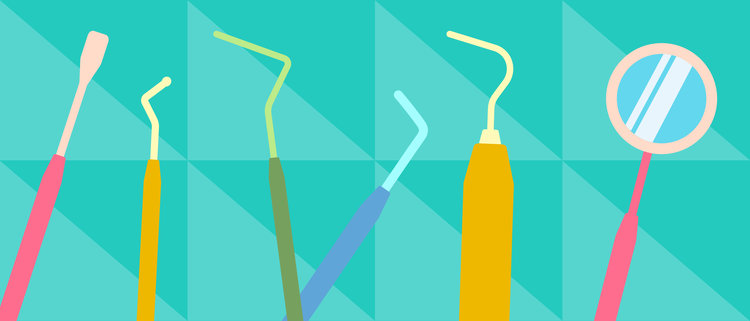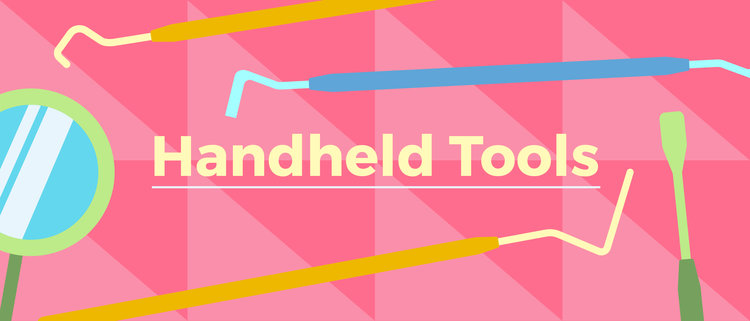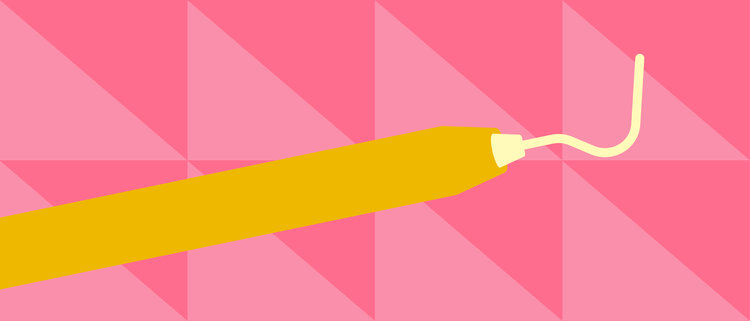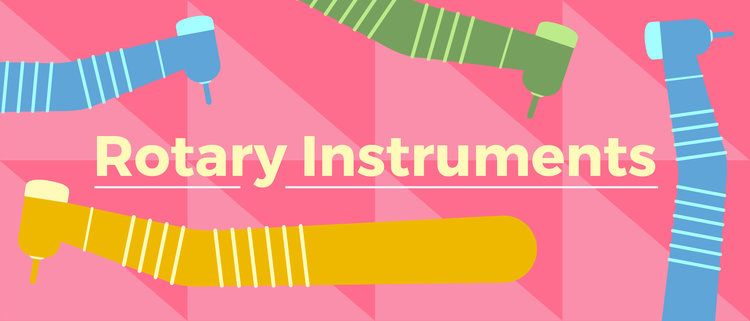Tools of the Trade

Going to the dentist for oral surgery can be traumatic but even getting a teeth cleaning can be an anxiety inducing experience if you’re not sure what your dentist will actually be doing inside your mouth and the purpose all of those intimidating looking tools.
Let’s read up and learn exactly what happens when patients sit down in the dentist’s chair. Let’s demystify some of the most common tools of the trade.
There are two main types of dental tools: handheld and rotary.


Handheld tool are exactly what they sound like: much like scissors for a barber, a dentist’s handheld tools require no external power and can be used anytime, anywhere.
Some of the most common handheld tools include mouth mirrors, probes, tweezers, scalers, excavators, chisels, hatchets and hoes.


Mouth Mirror
A mouth mirror is used to examine the inside of the mouth, the teeth, and the tongue.


The dental probe comes in a number of different sizes and shapes but the three most common are:
The straight probe (used to examine cavities and to check the margins of fillings or restorations), the Briault probe (used to detect the gap between the enamel and the dentine and to look for tartar hidden in the gum pockets), and the periodontal probe (less sharp than the other two and used primarily for taking measurements inside the mouth).


Scalers
Scalers are used to remove tartar (the hard plaque build up) on the surface of your teeth and hidden in the gum pockets. They’re also used to clean away any other surface deposits or to remove temporary crowns.


Excavators
Excavators serve two very important dental functions: they remove softened dentine and temporary fillings, and the back of the blade can also be used to insert linings in filling materials.


Chisels, hatchets, and hoes
Chisels, hatchets, and hoes are used most often during the process of filling a cavity. Their purpose is to remove any unsupported enamel that might compromise the filling process and longevity.
Some other notable hand held tools are plastic instruments (used to shape filling materials, plastic instruments do not use heavy pressure) and condensers or pluggers (used to compress and form filling materials, they do use heavy pressure).


Rotary instruments (also known as the infamous ‘dental drills’) are the ones that tend to freak patients out the most. Rotary instruments have two speeds (high/air turbine or low) and the noise produced in high speed mode is the one most of us typically associate negatively with our dental visits.
As alarming as the loud noises produced by the rotary instruments may be, they’re a vital part of maintaining your oral health! Drills can perform all kinds of necessary functions like filling cavities, smoothing the surface of the teeth, removing decay, and repairing chips.
Now that you’ve seen all of the tools of the trade, we hope to alleviate any anxiety you might normally feel next time you’re sitting in your dentist’s chair!
